Mechanical sculpture for Faz Elektrik
Designed to demonstrate new product line of actuators
This sculpture consists of a 7X7 matrix of toy ducks, which gracefully glide up and down in various formations, powered by 49 individual actuators.
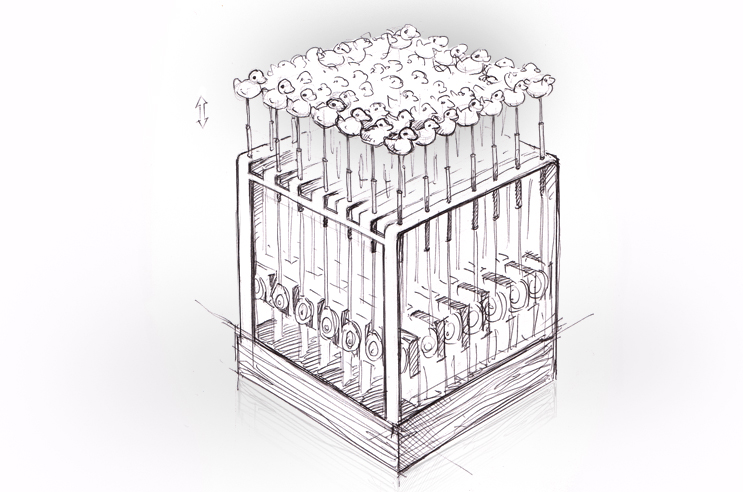
Each motor drives an eccentric sheave (circular cam), which can travel 180°. The sheave is encapsulated by a pear-shaped collar, which has a 3mm carbon fibre rod fixed into the top. Each rod passes through a guiding tube held above, and is then attached to the base of a duck.
To keep the mechanism as simple as possible, the flexible nature of the rod has been used instead of an additional linkage. Every step that can be simplified means 49 less parts to make, and therefore keeps the budget manageable.
The base of the sculpture is drawn here at approximately 650mm square. The exact proportions may vary as the sculpture is developed.
The diagrams below shows various stages in the cycle of the cam system. It may be necessary to mount the motors diagonally if they need to sit closer together (this would allow more room for the cams to manoeuvre).
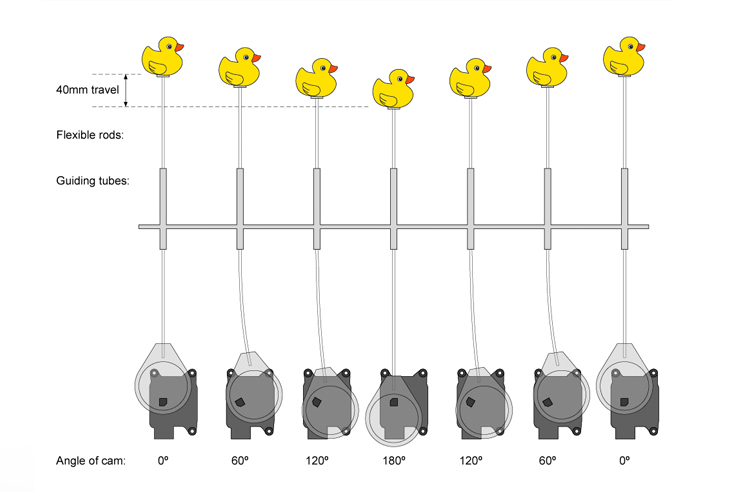
The cams would be made of clear polycarbonate, so that the motors would still be clearly visible, as this is of course the component being showcased.
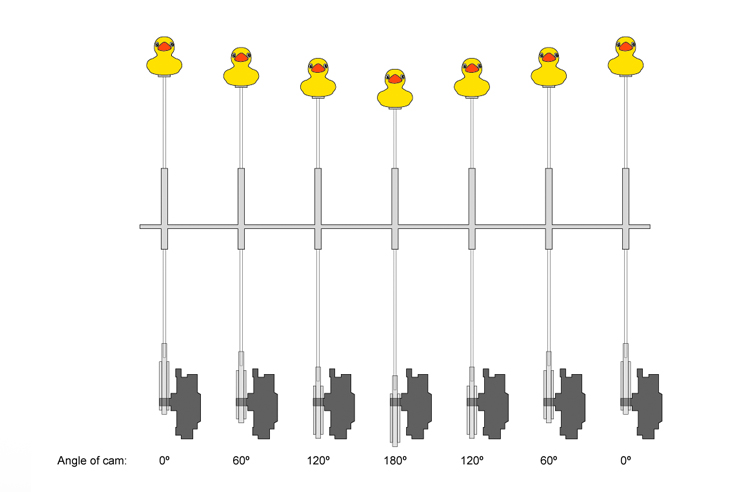
As the motors each have a built in potentiometer, it will be possible to use a microcontroller system to monitor the individual positions of all of the ducks. This means that the ducks can start at a 'home' position, and then cycle through a number of patterns, without getting out of sync.
The control system would consist of a number of "slave" Arduino boards that are controlled by a "master" board via I2C. The Arduino boards will have the ability to turn each motor on or off, reverse the polarity of the motor using a DPDT relay, and check the position of each motor to allow them to be synched now and again if necessary.
Once the mechanical aspects have been completed, a number of patterns can be programmed. The animations below show a couple of very crude examples, although the final sculpture would of course run a lot smoother.
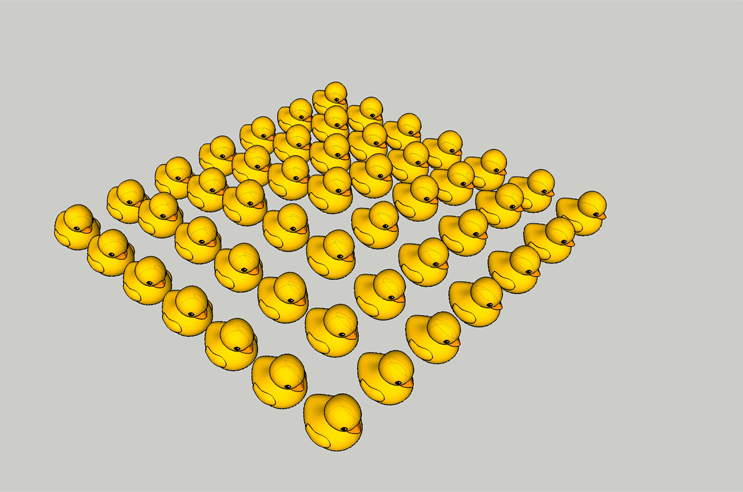
The animations are running a little fast - if the motor is running at 5rpm, each duck will take around 6 seconds to travel from one extreme to the other.
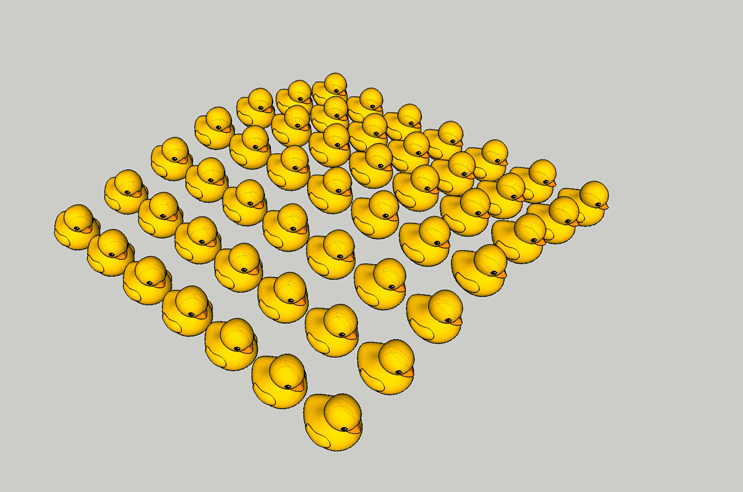
I think that this sculpture would certainly draw attention at the exhibition, and I am sure that it would make people visit the stand out of curiosity. After watching the undulating patterns of the ducks, the eye will naturally be drawn to investigate what is powering them, and the motors will be very clearly on display underneath.
The concept is a combination of humour with an underlying foundation of elegant and high quality engineering.
Please don't hesitate to get in touch should you have any questions.